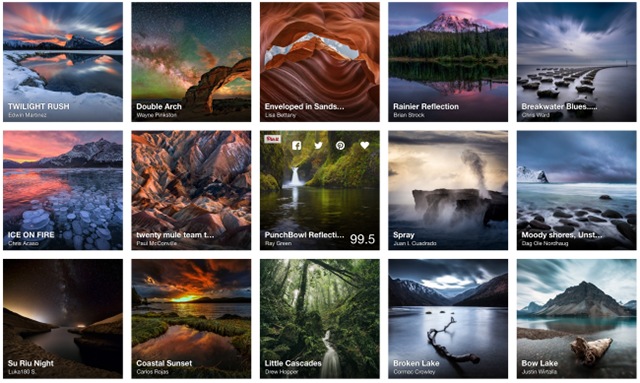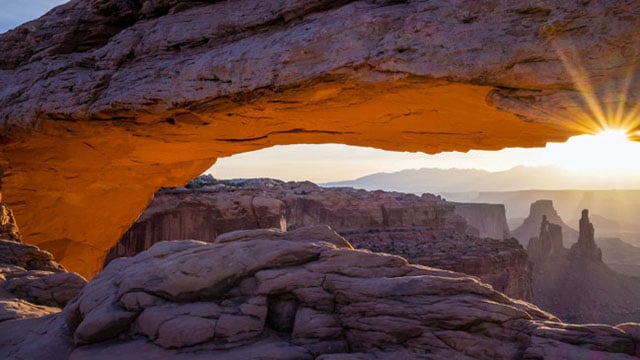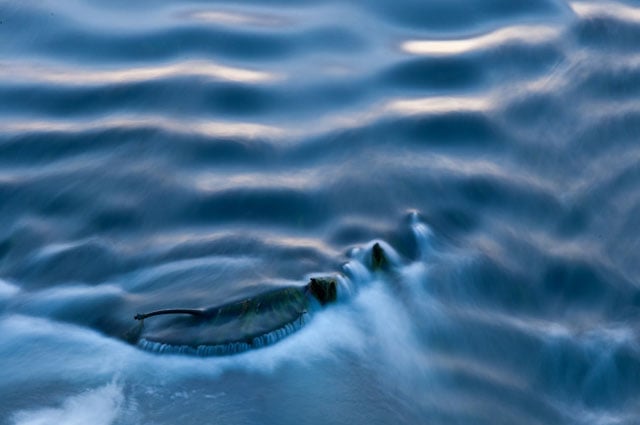Will the Real Landscape Photography Please Stand Up?
![]()
This post is a curmudgeonly look at the current state of landscape photography.
I was in Munich yesterday, munching on some bratwurst and drinking a beer in a place where a huge TV monitor on the wall was playing a slideshow of landscape photos. I couldn’t keep my eyes away from it, as the photos were really beautiful.
You know the type of photo: amazing locations, wonderful light, colorful sunsets, starry skies, waterfalls, ocean waves, tropical beaches, brilliant colors.
There was even a photo that was almost identical to Peter Lik’s Phantom, the most expensive photo ever sold.
And yet, after having seen the slideshow roll around three or four times, I was disgusted and wanted to throw my jug of beer at the screen. I even contemplated giving up landscape photography and picking up some other genre. That much beauty had left me numb and with a feeling not unlike how you feel after a binge of eating chocolate or sweets.
Part of the problem, I think, was that in a time and age when everyone can have a decent camera for not much money, when photographic education is cheap or free, when it is much easier to travel to awesome locations than it used to be, almost everything has already been photographed in the best light.
How many other beautiful photos of Moraine Lake or Antelope Canyon do we have to see? Or of Mesa Arch at sunrise? (Yes, I too am guilty of the latter).
I made a resolution the other day: if I ever visit Antelope Canyon, I will take a camera with one fixed lens and take one photo, just to be able to say: I’ve photographed inside Antelope Canyon. Then I’ll turn the camera off and take it all in with my eyes.
Another problem is that I am seeing a growing trend of conformity in landscape photography. I could not recognize any one of those photos and tell who the photographer was, but at the same time they could have been attributed to any one of the many photographers who are very popular on social media.
There is this prevalent style in landscape photography that aims to capture the viewer with dramatic light, strong composition and bright, saturated colors. I can definitely see why people like it, but I personally don’t like it anymore.
The third and final problem is that all those beautiful images didn’t speak to my soul. It’s as if, at some point, I realized that what the photographer was thinking of when he pressed the shutter and when he processed the image was: “How can I wow the viewer, get more accolades online, and make more sales?”

All of this would not be a problem and I could limit myself to bemoaning the lack of discernment of whomever put that slideshow together, but if I look at what is popular online, this is exactly what I see. Each one of those photos, if published on 500px, would have gone straight to one of the first pages of the popular photos of the day in the landscapes category.
Don’t get me wrong, all the photos on there (and those in this screenshot) are beautiful and I am not here to badmouth the photographers. But many of them, with a few exceptions, are shooting what the public likes and in a way that the public will appreciate.
Peter Lik is truly great at this: shooting exactly what sells and employing exceptional marketing skill to make millions. I envy him and everyone who manages to have even a hundredth of his commercial success. Life must be great up there.
To be honest, much of what I see every day on 500px is much, much better than the pictures on that slideshow and I realize that I am being too harsh here. But then again, I don’t see any of the photographer’s emotions and mood conveyed through some of these images and, to me, this is not art.
I don’t want to do a digression about the definition of art but, in a nutshell, I believe it is art if the artist puts himself or herself inside their work, not if somebody pays money to hang it on a wall.

So, now that I’ve come to this realization, what do I do? This is not a rant against other photographers; it is a reflection on where I want to be with my photography. Am I content with just being a curmudgeon on my not very popular blog, hoping that controversy will bring me traffic? I don’t want to be that guy.
Maybe I should go looking for great landscape photography somewhere else, far from the online world of followers and favorites. Maybe the great masters of the past can quench my thirst.
Who are the great, contemporary masters of landscape that do not follow this kind of mannerism and do not play to the lowest common denominator of mass market taste?
And what do I do with my own photography? I started thinking of limiting myself to shooting landscapes in black and white, to eschew assertive compositions in favor of a plainer and more relaxed style, to blur details intentionally, to employ ambiguity as a technique that is the opposite of the extreme clarity that is sought in the prevalent style.
But if I do so, will I become a mannerist myself and end up consciously choosing a style because of the effect I think it will have on people, not because it is part of me?
So many tough questions. The only thing I know for sure is that I didn’t think being an artist would be so difficult.

About the author: Ugo Cei is a fine art, landscape and travel photographer based in Italy. Visit his website here and his blog here. This article originally appeared here.